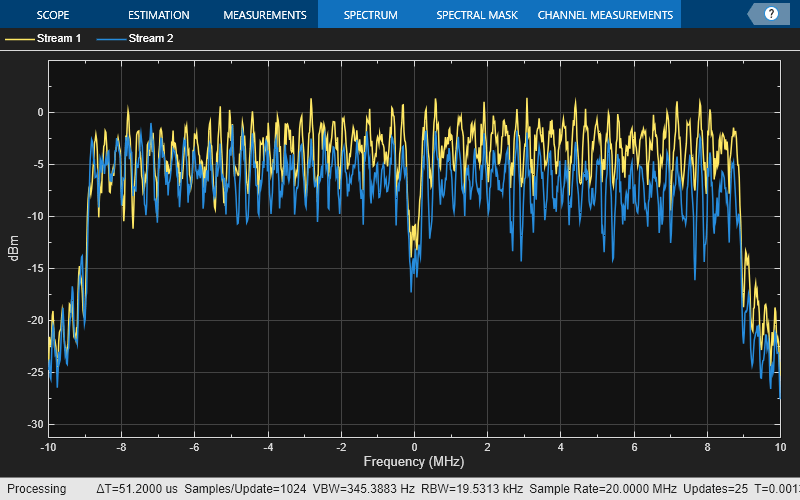wlanTGnChannel
Filter signal through 802.11n multipath fading channel
Description
The wlanTGnChannel
System object™ filters an input signal through an 802.11n™ (TGn) multipath fading channel.
The fading processing assumes the same parameters for all NT-by-NR links of the TGn channel. NT is the number of transmit antennas and NR is the number of receive antennas. Each link comprises all multipaths for that link.
To filter an input signal using a TGn multipath fading channel:
Create the
wlanTGnChannelobject and set its properties.Call the object with arguments, as if it were a function.
To learn more about how System objects work, see What Are System Objects?
Creation
Description
tgn = wlanTGnChanneltgn. This object filters a real or complex input
signal through the TGn channel to obtain the channel-impaired signal.
tgn = wlanTGnChannel(Name,Value)tgn, and sets properties using one or
more name-value pairs. Enclose each property name in quotes. For example,
wlanTGnChannel('NumReceiveAntennas',2,'SampleRate',10e6) creates a
TGn channel with two receive antennas and a 10 MHz sample rate.
Properties
Usage
Description
[
also returns in y,pathGains] = tgn(x)pathGains the TGn channel path gains of the
underlying fading process.
This syntax applies when you set the PathGainsOutputPort property to 1
(true).
Input Arguments
Output Arguments
Object Functions
To use an object function, specify the
System object as the first input argument. For
example, to release system resources of a System object named obj, use
this syntax:
release(obj)
Note
reset: If the
RandomStream property of the System object is set to 'Global stream', the reset function resets the filters only. If you set
RandomStream to 'mt19937ar with seed', the
reset function not only resets the filters, but also
reinitializes the random number stream to the value of the Seed
property. This results in the same channel realization.
Examples
Algorithms
References
[1] Erceg, V., L. Schumacher, P. Kyritsi, et al. TGn Channel Models. Version 4. IEEE 802.11-03/940r4, May 2004.
[2] Kermoal, J. P., L. Schumacher, K. I. Pedersen, P. E. Mogensen, and F. Frederiksen, “A Stochastic MIMO Radio Channel Model with Experimental Validation”. IEEE Journal on Selected Areas in Communications., Vol. 20, No. 6, August 2002, pp. 1211–1226.
Extended Capabilities
Version History
Introduced in R2015b

